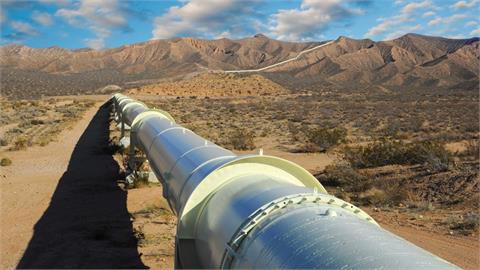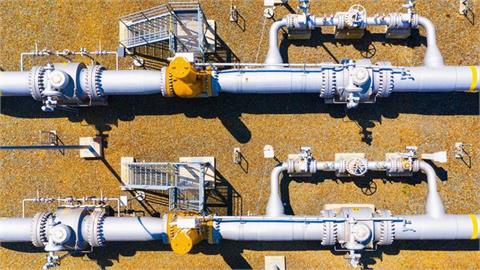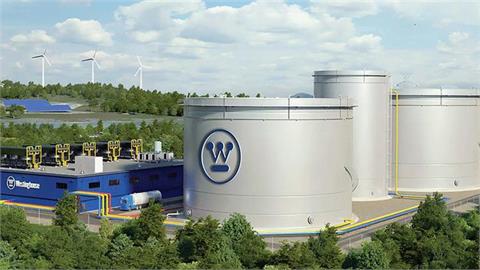Slovakian gas pipeline
operator Eustream expects to sign within weeks commercial agreements with
potential partners on the development of Eastring, a new bidirectional pipeline
that would carry gas from Western Europe to the Balkans, a senior company
official said.
In May, Bulgaria, Romania, Hungary and Slovakia signed a declaration in support
of plans to interlink their gas grids and increase bi-directional capacity
while joining their efforts to seek new sources and routes for gas supply
diversification.
"Despite the fact we perceive the conclusion of this declaration in a very
positive way, it has no concrete implications for the further steps for the
project’s implementation or its timeline. This is an issue that should be
solved on commercial basis,” Mirek Topolanek, Eustream’s international
development and public affairs director, told SeeNews in an emailed interview.
"We expect to be able to conclude such company-level declarations during the
upcoming weeks in order to achieve our main target, which is to allow this
project to be fully operational by the end of 2019.”
Eastring, conceived as an alternative to the now defunct South Stream, should
secure natural gas supply to fully meet the consumption needs of all Balkan
countries.
"After the cancellation of the South Stream gas pipeline project, Eastring is a
very important element in the process of diversifying natural gas sources and
transmission routes, namely for the countries of the Balkan region which can be
connected to Western gas hubs,” Topolanek said.
Eastring, with ultimate capacity seen at 40 billion cu m per year, could
provide Western gas shippers with a possibility to supply Balkan countries and
even Turkey from European hubs such as NetConnect Germany, Gaspool, Baumgarten,
and the Dutch-based Title Transfer Facility, official project data indicated.
Another very important aspect of the Eastring project is its ability to connect
countries in Central and Eastern Europe to the gas from liquefied natural gas
terminals in Greece and Turkey, which would be made possible through
interconnectors that Bulgaria plans with both countries.
"The planned link between Bulgaria and Turkey allows also considering the
Eastring pipeline from another perspective – as a project able to connect
Europe to alternative gas sources from the Caspian region, Azerbaijan,
Turkmenistan and Iran, and last but not least also to gas of Russian origin,
delivered through the planned Turk Stream pipeline. From the perspective of all
mentioned aspects, the Eastring project fits perfectly into the strategy for
the development of Bulgaria’s gas infrastructure,” Topolanek said.
In December, Russia's Gazprom and Turkey’s Botas signed a memorandum of
understanding for the construction of an offshore gas pipeline that will have a
capacity of 63 billion cu m.
The move followed the announcement that Russia was abandoning plans to build
the South Stream, a gas pipeline project that would have opened up a supply route
to Southeast Europe that bypasses Ukraine and is less at risk of disruption.
Eastring will start at an existing compressor station in Velke Kapusany in
Slovakia, where it should connect with Eustream’s existing gas transit assets
serving to supply mainly Western Europe as well as Ukraine in reverse flow,
official project data indicated. From there, Eastring will aim to the south
border with Hungary, crossing the north-east territory of Hungary in a U-shape
towards the Romanian borders.
In this initial phase there are two routing options suggested in Romania and
Bulgaria.
The first route option passes through storage and production facilities in
Transylvania and continues to the existing interconnection point Isaccea where
it connects to the existing transit infrastructure which runs through the
Romanian-Bulgarian border at Negru Voda and then onwards from north-east to
south-east along the existing Bulgarian gas transit assets to tie into the
Turkish gas transit network at Malkoclar.
The second route option passes through both storage areas and production
facilities, Bucharest and continues to the Romanian-Bulgarian border and then
onwards straight to the Turkish border at Malkoclar.
According the first simulations, Eastring will be approximately 832–1,015 km in
length, depending on the chosen route. However, the pipeline routing is still
not final and it will be further refined in all countries.
Topolanek said discussions with Eustream’s potential partners on the Eastring
project, mainly from Hungary, Romania and Bulgaria, continue and have so far
resulted into the successful submission of the project to the reopened Ten Year
Network Development Plan of the European Network of Transmission System
Operators for Gas and to the pool of candidates for the list of the EU’s
Projects of Common Interest (PCI), which would make it eligible for financial
support from the bloc’s Connecting Europe Facility (CEF) fund.
After successful submission of the project to the PCI list, Eastring’s backers
will be able to proceed with further steps, covering also conducting a market
test.
"On the technical level, we are, inter alia, working on the precise project
routing, which will enable calculation of the detailed project specifications,
including the costs for its implementation and operation,” the official said.
Eustream continues to hold meetings with big gas companies from Western Europe
on possible involvement in Eastring but at this point of time, Topolanek said
it would be premature to disclose concrete names.
Asked when an official selection of partners could be made, Topolanek said this
decision depends on many factors, including but not limited to an agreement
with Eustream’s current partners on the future project structure as well as
project financing issues.
"In order to have more visibility on a project funding structure, we have
entered into discussions with all relevant institutions, including the European
Investment Bank. However, agreement on the financing structure of the project
could be achieved only after the EC reaches a decision on a possible CEF
grant,” Topolanek said.
Source: SeeNews
Related content
Thursday, 30 October 2025
Thursday, 30 October 2025
Wednesday, 29 October 2025
Wednesday, 29 October 2025



